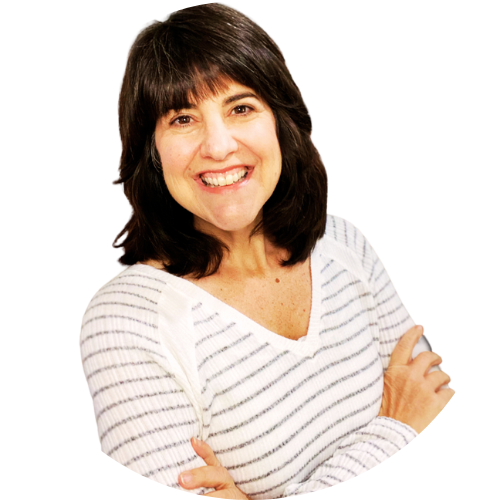Pregnancy and the postpartum period are times of extraordinary change for the body. While both phases are filled with joy and anticipation, they can also bring physical discomfort that can be overwhelming. For many women, massage therapy offers a safe and effective way to find relief.
This article explores how prenatal massage helps alleviate pain during pregnancy and how postpartum massage can support recovery after birth. By understanding the unique benefits of each, expectant and new mothers can use massage as a powerful tool for comfort and healing.
Common Sources of Pain During Pregnancy
Pregnancy is often accompanied by discomfort, stemming from the body’s efforts to support a growing baby. Hormonal changes, particularly the release of relaxin, loosen ligaments and joints, which can sometimes lead to instability and pain1.
At the same time, weight gain and a shifting center of gravity place additional strain on posture, creating tension in the lower back, hips, and shoulders.
Swelling, or edema, is another frequent challenge, caused by fluid retention and circulatory changes that leave the legs and ankles feeling heavy². With the body producing a higher blood volume, pressure on veins can further contribute to swelling and painful leg cramps.
These combined factors explain why so many mothers seek safe ways to relieve discomfort throughout pregnancy.
How Prenatal Massage Helps Alleviate Pain
Prenatal massage is specifically tailored to address these unique physical challenges. Gentle, specialized techniques can help reduce swelling by promoting lymphatic drainage and stimulating circulation². At the same time, targeted work in the hips, back, and shoulders helps relieve the muscular stress that results from altered posture. Improved circulation not only supports tissue health but also enhances oxygen delivery, which can ease fatigue and make day-to-day movement feel more manageable.
Perhaps just as important, massage during pregnancy helps reduce stress hormones. Research shows that sessions can lower cortisol levels while boosting serotonin and dopamine, the body’s natural “feel good” chemicals³.
This hormonal shift not only improves mood but also reduces the perception of pain, providing an added layer of relief during a physically demanding time. Unlike regular massage, prenatal sessions are performed in side-lying positions or with special cushions for support, ensuring the comfort and safety of both mother and baby¹.
Postpartum Pain and Discomfort
Although pregnancy receives much of the attention when it comes to pain, the postpartum stage can be equally challenging. Many new mothers experience muscle soreness from labor itself, while lingering relaxin leaves joints somewhat unstable in the weeks following birth¹.
Surgical deliveries or episiotomies introduce the added factor of scar tissue, which can feel tender or limit mobility as it heals⁴. Beyond these direct effects of childbirth, the daily realities of infant care create their own set of discomforts: neck and shoulder strain from breastfeeding, back tension from constant lifting and carrying, and fatigue from round-the-clock care. Emotional stress compounds these physical symptoms, often making them feel even more intense⁵.
How Postpartum Massage Aids Recovery
Postpartum massage is designed to meet mothers where they are in recovery. Gentle massage around C-section scars can improve circulation, reduce adhesions, and support healing of the surrounding tissue⁴. Therapists often focus on the upper body, easing the shoulder and neck tension that comes from holding and feeding a newborn.
The emotional benefits are equally important. Massage can lower anxiety, promote better sleep, and provide a sense of restoration at a time when many mothers feel drained⁵. Instead of being treated as a luxury, postpartum massage is increasingly recognized as an important part of recovery that addresses both the body and the mind.
Prenatal vs. Postpartum Massage: What’s Different?
While both prenatal and postpartum massage are safe and therapeutic, they differ in focus and technique.
Prenatal massage prioritizes circulation, swelling reduction, and gentle joint relief, with the mother positioned side-lying or supported by cushions to ensure safety². Pressure tends to be light to moderate, designed to provide relief without overstimulation.
Postpartum massage, by contrast, allows for deeper, more targeted work once a healthcare provider has given clearance. At this stage, therapists may address scar tissue, core and pelvic support, and the repetitive stress that comes from constant childcare⁴.
By tailoring massage to the mother’s stage, therapists provide not only physical relief but also confidence that each session supports her specific needs.
Safety Considerations
As with any therapy during pregnancy or recovery, safety is the top priority. Mothers should always consult their OB or midwife before beginning prenatal massage, particularly if they have high-risk pregnancies or medical complications¹.
Licensed therapists with specialized training in prenatal massage are best equipped to provide safe and effective care, since they understand which positions and pressure points to avoid. Side-lying positioning after 20 weeks is especially important to maintain circulation and comfort².
For postpartum massage, medical clearance is recommended before starting, especially for those recovering from a C-section or significant complications⁵. A trained postpartum therapist can safely address scar tissue and help mothers ease back into wellness routines. With these precautions in place, massage is a gentle, non-invasive way to manage discomfort during both pregnancy and recovery.
Conclusion
From swelling and soreness during pregnancy to scar healing and muscle strain after childbirth, massage therapy offers meaningful support through every stage of motherhood. Understanding how prenatal massage helps alleviate pain underscores its value as more than just relaxation—it is a therapeutic practice that supports circulation, reduces tension, and eases the physical and emotional burdens of pregnancy. Postpartum massage extends these benefits, helping mothers recover from birth, restore stability, and cope with the demands of caring for a newborn.
For expectant and new mothers alike, massage is a safe, effective, and holistic way to find relief and healing. By tailoring techniques to the body’s changing needs, it becomes not only a form of comfort but a vital part of self-care and recovery.
This article is part of Soothe’s collaboration with Tot Squad to offer massages as part of the baby registry experience with major retailers like Target and Amazon.
References
American Pregnancy Association. Prenatal Massage: Benefits and Safety. Retrieved from https://americanpregnancy.org/healthy-pregnancy/is-it-safe/prenatal-massage/
Cleveland Clinic. Prenatal Massage: What You Need to Know. Retrieved from https://health.clevelandclinic.org/prenatal-massage
Field, T. (2021). Prenatal Massage Therapy Research: A Review. International Journal of Environmental Research and Public Health, 18(15), 7876. Available on PubMed Central: https://www.ncbi.nlm.nih.gov/pmc/articles/PMC8396946/
Verywell Health. Postpartum Massage: Benefits, Techniques, and Safety. Retrieved from https://www.verywellhealth.com/postpartum-massage-5209564
Mayo Clinic. Postpartum care: What to expect after a vaginal delivery. Retrieved from https://www.mayoclinic.org/healthy-lifestyle/labor-and-delivery/in-depth/postpartum-care/art-20047233


